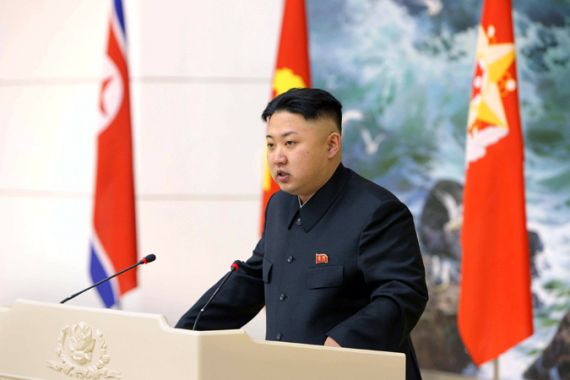North Korea rocket launch was ‘missile test’
South Korean defence ministry says launch of satellite into space was disguised test of a 10,000km-range ‘missile’.

North Korea’s launching of a rocket into space last week amounted to the test of a ballistic missile capable of carrying a half-ton payload over 10,000km, the South Korean defence ministry says.
“Based on our analysis and simulation, the missile is capable of flying more than 10,000km with a warhead of 500-600kg,” a defence ministry official told reporters on Sunday.
Keep reading
list of 4 itemsAfter the Hurricane
World’s coral reefs face global bleaching crisis
Why is Germany maintaining economic ties with China?
North Korea launched its three-stage Unha-3 rocket on December 12, insisting it was a purely scientific mission aimed at putting a polar-orbiting satellite in space, but critics say it was aimed at nurturing the kind of technology needed to mount a nuclear warhead on a long-range missile.
South Korea’s estimate of the rocket’s range was based on analysis of an oxidizer container, which stored nitric acid to fuel the vehicle’s first-stage propellant. The container was recovered from the rocket’s first-stage splashdown site.
Without any debris from the second and third stages to analyse, the official said it could not be determined if the rocket had re-entry capability – a key element of inter-continental ballistic missile (ICBM) technology.
Several countries and international bodies, including the UN Security Council, condemned the North’s rocket launch as a disguised ballistic missile test that violates UN resolutions imposed on the country after it conducted nuclear tests in 2006 and 2009.
The North says that the launch was meant to transport a satellite into space. Observers, including the North American Aerospace Defence Command (NORAD) confirmed that an “object” had been launched into space by the rocket.
North defiant
The success of the launch was seen as a major strategic step forward for the isolated North, although missile experts differed on the level of ballistic capability demonstrated by the rocket.
The debris collected by the South Koreans was made of an alloy of aluminium and magnesium with eight panels welded manually.
“Welding was crude, done manually,” the ministry official said, adding that oxidiser containers for storing toxic chemicals are rarely used by countries with advanced space technology.
Kim Jong-un, the North Korean leader, meanwhile, has called for the development of more powerful rockets in the wake of last week’s launch.
The North’s official media said on Saturday that Kim made the call at a banquet for rocket scientists in Pyongyang on Friday.
Kim had already called for sending more scientific satellites into space on the day of the launch. But his speech on Friday marks the first time he was seen explicitly calling for the advancement of his country’s long-range rocket program.